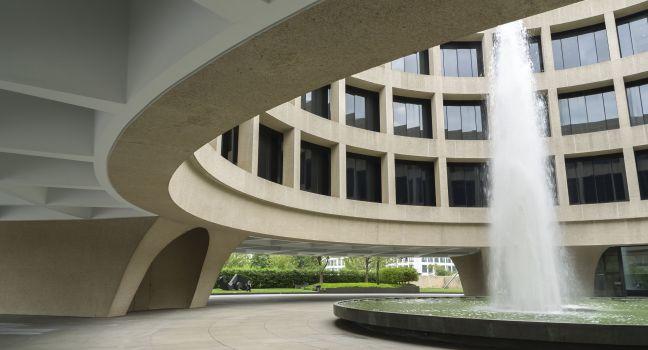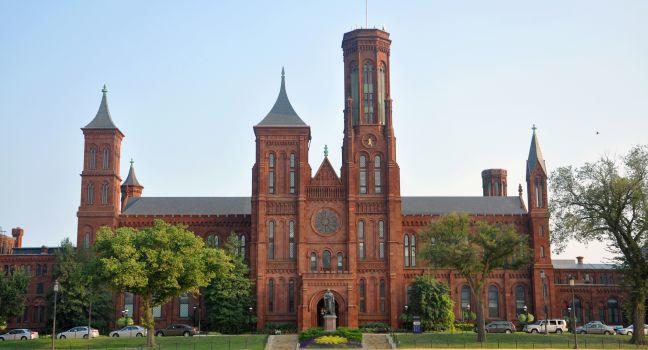Hirshhorn Museum and Sculpture Garden

Conceived as the nation's museum of modern and contemporary art, the Hirshhorn is home to nearly 12,000 works by masters who include Alexander Calder, Andy Warhol, and Louise Bourgeois, as well as contemporary superstars Anish Kapoor and Yinka Shonibare. The art is displayed in a circular poured-concrete building designed by Gordon Bunshaft, dubbed the "Doughnut on the Mall" when it was built in 1974. The museum's founder, Joseph H. Hirshhorn, a Latvian immigrant who made his fortune in uranium mines, bequeathed most of the initial collection.
The sculpture collection has masterpieces by Henry Moore, Alberto Giacometti, and Constantin Brancusi. Outside, sculptures dot a grass-and-granite garden. Among them is Yoko Ono's Wish Tree for Washington, DC. On the plaza stands a 32-foot-tall yellow cartoon sculpture by pop-art iconographer Roy Lichtenstein that has become a beloved local landmark.
The third level's outer ring is the place to see thought-provoking conceptual art from the museum's permanent collection. Inside the third level, you can see dramatic postwar art from the museum's permanent collection, displayed thematically, with works by artists such as Joseph Cornell, Isa Genzken, Alighiero e Boetti, and Sol LeWitt. Check out Cornell's Untitled (Aviary with Yellow Birds) and Yoko Ono's Sky TV for Washington, DC. Large-scale text works by conceptual artist Lawrence Weiner round out the space.
The second level houses exhibits that rotate about three times a year, curated by museum staff and devoted to particular artists or themes. The lower level houses recent and experimental works from the permanent collection, while the sculpture garden makes an inspiring spot for a picnic. Dolcezza, a popular local coffee and gelato brand, set up a small café at the museum, perfect for a coffee break.




